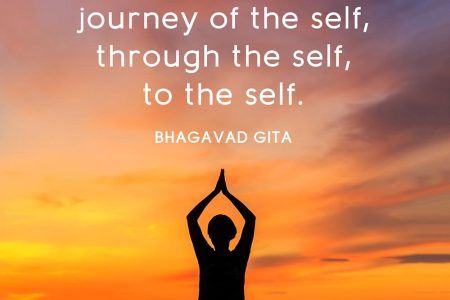In the serene dance of breath and movement, yoga weaves a tapestry of tranquility and strength, its roots stretching deep into the fertile soil of ancient India. Yet, like a river charting its own course, yoga has journeyed across oceans, mountains, and continents, finding a new home in the bustling cities and tranquil countrysides of the Western world. This article explores the fascinating odyssey of yoga, tracing its transformation from a sacred practice shrouded in mysticism to a global phenomenon embraced by millions. As we delve into the past, we uncover the cultural exchanges, pivotal moments, and influential figures that have shaped yoga’s path, offering a reflection on how this ancient discipline continues to evolve and resonate in our modern lives. Join us as we embark on this enlightening journey, discovering how yoga’s timeless wisdom has transcended boundaries, enriching the tapestry of Western wellness and spirituality.
The Ancient Roots of Yoga Unveiled
The tapestry of yoga’s history is woven with threads from ancient civilizations, a practice that has transcended time and space. Originating in the Indus Valley over 5,000 years ago, yoga was first documented in the sacred texts known as the Vedas. These early scriptures laid the foundation for a spiritual and philosophical journey that would evolve through the ages. The Upanishads and Bhagavad Gita further expanded on these teachings, introducing concepts of meditation and mindfulness that are still integral to yoga today. As it journeyed through the ages, yoga was enriched by the teachings of sages like Patanjali, who compiled the Yoga Sutras, a seminal text that codified the practices and ethics of yoga.
- Vedic Period: The genesis of yoga, characterized by ritualistic practices and hymns.
- Classical Period: Marked by Patanjali’s Yoga Sutras, which systematized yoga into an eightfold path.
- Post-Classical Period: A shift towards a more personal and experimental approach to yoga, focusing on the body and physical postures.
- Modern Period: The spread of yoga to the Western world, where it evolved into various styles and practices.
Yoga’s migration to the Western world was spearheaded by pioneers like Swami Vivekananda and Paramahansa Yogananda in the late 19th and early 20th centuries. They captivated audiences with lectures and demonstrations, introducing a new perspective on health, wellness, and spirituality. As the 1960s and 70s ushered in an era of cultural exploration, yoga found fertile ground in the West, blossoming into a diverse array of styles and practices. Today, it stands as a global phenomenon, offering a path to physical vitality and mental clarity.

Cultural Exchange and the Westward Expansion
The journey of yoga from its ancient roots in India to its current status as a beloved practice in the Western world is a tale of cultural exchange and adaptation. This ancient discipline, with its blend of physical postures, breathing exercises, and meditation, found fertile ground in the West during the 20th century. Pioneers such as Swami Vivekananda and Paramahansa Yogananda were instrumental in introducing the spiritual and philosophical aspects of yoga to Western audiences. They emphasized the practice’s potential for personal transformation and inner peace, resonating with those seeking alternatives to traditional Western religious and fitness paradigms.
As yoga spread across the Western hemisphere, it underwent a transformation, influenced by the diverse cultures it encountered. Some key factors that contributed to its widespread acceptance include:
- Adaptation of Practices: Western practitioners modified traditional poses to align with modern fitness trends.
- Commercialization: The rise of yoga studios and branded apparel helped popularize the practice.
- Celebrity Endorsement: High-profile advocates brought yoga into the public eye, encouraging its adoption.
- Scientific Validation: Research highlighting yoga’s health benefits increased its credibility and appeal.
This cross-cultural journey has led to a rich tapestry of yoga styles, each reflecting a unique blend of Eastern philosophy and Western innovation.
Yogas Transformation in Western Society
In recent decades, yoga has undergone a remarkable metamorphosis as it has journeyed from its ancient roots in India to become a staple of Western wellness culture. Initially perceived as an exotic practice shrouded in mysticism, yoga has been reimagined and integrated into the fabric of Western life, shedding its esoteric image to become a mainstream pursuit. This transformation has been driven by a confluence of factors, including the global spread of Eastern philosophies, a burgeoning interest in holistic health, and the adaptability of yoga itself. Today, yoga studios dot urban landscapes, and its influence is evident in diverse settings, from corporate offices to educational institutions.
- Adaptation and Innovation: The Western adoption of yoga has seen the development of numerous styles, such as Vinyasa, Power Yoga, and Yin Yoga, each offering unique benefits and catering to different preferences.
- Integration with Technology: The digital age has further propelled yoga’s popularity, with online classes and apps making it accessible to a broader audience.
- Holistic Wellness Movement: As part of a larger trend towards holistic wellness, yoga complements practices like meditation, mindfulness, and healthy living.
With its flexibility and universal appeal, yoga continues to evolve, reflecting the changing landscapes of health, spirituality, and lifestyle in Western society. This evolution not only highlights yoga’s enduring relevance but also its profound ability to transcend cultural boundaries.
Embracing Authenticity: Recommendations for Modern Practitioners
As yoga found its way from the ancient ashrams of India to the bustling cities of the Western world, it encountered a cultural transformation. Modern practitioners often face the challenge of staying true to the practice’s roots while adapting to contemporary lifestyles. To maintain authenticity, consider these recommendations:
- Study the Origins: Immerse yourself in the rich history and philosophy of yoga. Understanding its spiritual foundations can deepen your practice and teaching.
- Prioritize Personal Experience: Encourage students to connect with their inner selves rather than striving for perfect poses. Authenticity is born from personal discovery, not imitation.
- Foster Inclusivity: Create an environment where all body types, ages, and backgrounds feel welcome. Yoga is a universal practice that thrives on diversity.
- Integrate Mindfulness: Beyond physical postures, emphasize meditation and breathwork to cultivate a holistic approach.
By embracing these practices, modern yogis can honor the essence of yoga while making it accessible and relevant to today’s world. Balancing tradition with innovation allows for a practice that is both genuine and evolving.
In Conclusion
As we roll up our mats and prepare to leave the serene world of asanas and pranayama, it’s clear that yoga’s journey to the Western world is a tapestry woven with threads of tradition, transformation, and transcendence. From its ancient roots in the sacred soil of India to its modern-day expression in bustling urban studios, yoga has evolved, adapted, and thrived, offering a sanctuary of peace amidst the chaos of contemporary life.
This odyssey of movement and mindfulness has transcended cultural and geographical boundaries, inviting individuals from all walks of life to explore its depths. Whether seeking physical vitality, mental clarity, or spiritual awakening, the practice of yoga remains a beacon of balance and harmony in a world ever in flux.
As we close this chapter, let us carry forward the timeless wisdom of yoga, embracing its teachings both on and off the mat. For in its journey to the West, yoga has not only enriched our lives but also reminded us of the universal quest for unity and understanding—a journey that continues with each breath we take.

